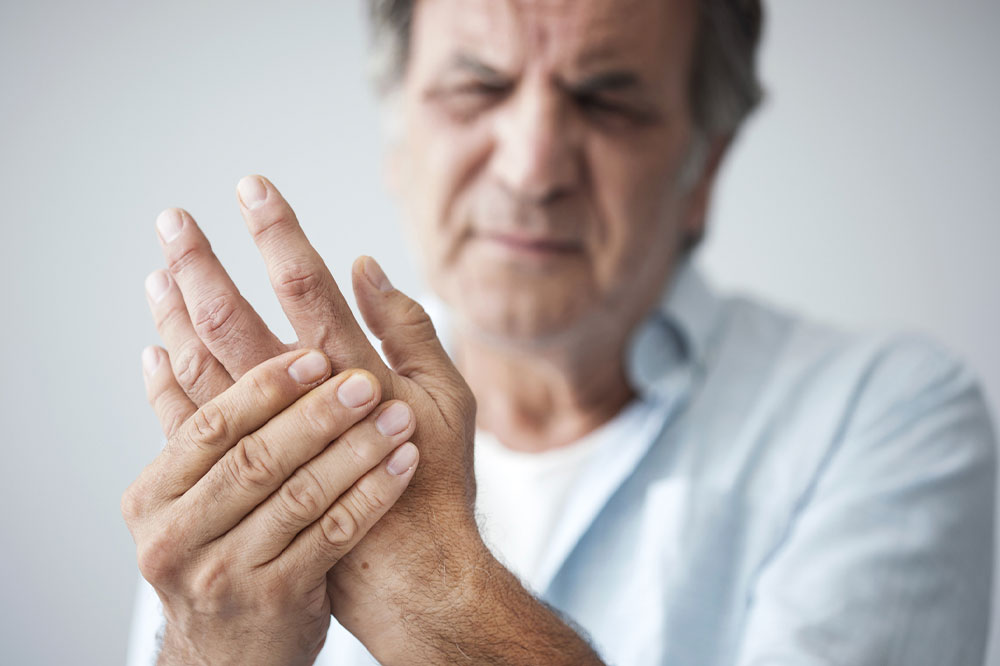
Arthritis – Signs, treatments, and prevention methods
Statistics suggest that at least 22 percent of our country’s adults have arthritis, a form of joint inflammatory disease. Unfortunately, there is no cure for arthritis. But, because the symptoms are easy to identify, it can be diagnosed in time, and doctors can prescribe treatments to improve patients’ quality of life. This article highlights the signs and treatment options for arthritis and lists a few practical measures to help prevent the disease.
Signs and symptoms
Joint stiffness
Autoimmune diseases like arthritis may cause stiff joints in the initial stages. While the stiffness can occur at any hour of the day, people usually experience it in the morning. Hence, this symptom is sometimes called morning stiffness. Arthritis may cause stiffness in multiple joints, irrespective of activity .
Joint pain
One may experience joint pain while performing physical activity and even when resting. It might affect both sides of the body equally. People with rheumatoid arthritis usually experience pain in the fingers and wrists, while those suffering from osteoarthritis experience pain in the knees, ankles, and other weight-bearing joints.
Joint swelling
One of the most common symptoms of arthritis is joint inflammation or swelling. The inflammation or swelling is usually accompanied by warmth in the joints. Gout, a type of arthritis, is caused due to excess uric acid in the body. This excess uric acid results in the formation of uric acid crystals in the joints, leading to pain and inflammation.
Reduced range of motion
Stiffness, inflammation, tenderness, and pain can cause deformity in ligaments and tendons, making them unstable. As a result, one might find it challenging to use their joints effectively during physical activity.
Numbness in the limbs
As the disease progresses, the joints in the hands and legs might produce squeaking and crackling sounds due to damaged cartilage. Further, joint inflammation can put pressure on the nerves, making the limbs numb.
Treatment options
Physiotherapy
This is usually the first line of treatment for arthritis, especially when the symptoms are mild. Physiotherapy helps improve the range of motion and strengthen the joints, improving blood circulation. It is important to note that physiotherapy exercises can vary based on one’s symptoms.
Clinical intervention
Clinical intervention can be in any form, like topical creams, pills, and injections. Most rheumatologists suggest opting for NSAIDs topicals that come in the form of creams, liquids, patches, and gels that are prescription-based or available over the counter.
Invasive treatments
This is suitable for arthritis symptoms that do not improve with physiotherapy and other forms of treatment. One widely preferred least invasive treatment is platelet-rich plasma (PRP). It involves drawing blood from the patient in a tube and spinning it in a centrifuge to separate different blood components. The platelets are extracted and injected into the arthritis-affected areas, which helps heal tissue damage.
Preventive measures
Perform non-impact exercises
Doctors suggest that light-intensity exercises can relieve arthritis pain and help improve joint strength. One must, however, steer clear from high-impact exercises as they can put stress on the joints and aggravate the symptoms. Popular light-intensity exercises include swimming and brisk walking.
Improve posture
A good body posture reduces the pressure from the joints, lowering the risk of arthritis in the knees and hips. There are particular exercises to improve posture and strengthen the core muscle, and patients can consult a doctor or physiotherapist to learn about them.
Avoid wearing high heels
A prevention tip for women, high heels can put a lot of pressure on the hips and knees, aggravating arthritis symptoms. Bodily joints are surrounded by cartilage, and wearing high heels can damage them, resulting in pain and inflammation.
Use better body mechanics
Good body mechanics can help prevent arthritis. For instance, lifting heavy objects using the strength in the legs instead of the back can take the stress off the joints, reducing the risk of the condition.
Eat more omega-3 fatty acids
Omega-3 fatty acids are healthy polyunsaturated fats that help reduce inflammation in the body, lowering the risk of arthritis. Foods rich in omega-3 fatty acids include freshwater fishes like salmon, sardines, and trout. Flaxseeds, chia seeds, walnuts, and plant oils like soybean oil and canola oil are also excellent sources.
Eat more vitamin D
Lack of vitamin D results in weaker bones, increasing the risk of osteoarthritis. Vitamin D-rich foods like salmon, dairy products, egg yolks, and mushrooms strengthen the bones, keeping arthritis symptoms at bay. However, one must consult a doctor before making any food changes.




